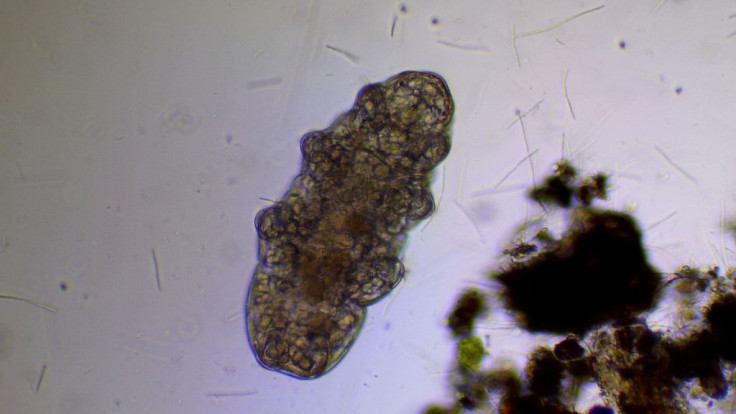Even Hardy Tardigrades Will Be Vulnerable To Global Warming, Study Finds

KEY POINTS
- Tardigrades are known for their capability to survive extreme environments
- They can enter a state of cryptobiosis, which can help them survive even harsher conditions
- Researchers found tardigrades' 'upper limit' for high temperatures
- The study shows tardigrades' vulnerability in the face of a warming planet
A team of researchers from the University of Copenhagen found that even hardy tardigrades that are well known for being incredibly tolerant of harsh environments are vulnerable to prolonged exposure to high temperatures.
Did the researchers just find tardigrades’ Achilles heel?
Hardy Tardigrades
It is no secret that global warming has a negative impact on habitats all around the world, which is why it is important to see just how the rising temperatures may affect living creatures. Researchers of a new study, published in Scientific Reports, investigated tardigrades’ tolerance to high temperatures.
Tardigrades, also known as water bears or moss piglets, are microscopic invertebrates distributed in freshwater, marine and terrestrial microhabitats worldwide. They are known for being extraordinarily tolerant of extreme conditions as well as for their ability to enter a state of cryptobiosis in response to adverse conditions.
In one cryptobiosis subtype known as anhydrobiosis or desiccation, the tardigrades lose 97 percent of their body moisture and shrivel to just a third of their original size. In this state of desiccation, they can survive even harsher conditions.
High Temperatures
Some tardigrade species have been reported to be capable of tolerating temperatures up to 151 degrees Celsius (303.8 degrees Fahrenheit) for 30 minutes, while others can tolerate up to 80 degrees Celsius (176 degrees Fahrenheit) for an hour in a desiccated state.
For the study, the researchers focused on the tardigrade species Ramazzottius varieornatus (R. varieornatus), which are frequently found in transient freshwater habitats. In fact, the specimens the researchers used for their study were from the roof gutters of a house in Denmark.
“We evaluated the effect of exposures to high temperature in active and desiccated tardigrades, and we also investigated the effect of a brief acclimation period on active animals," study co-author Ricardo Neves said.
The researchers conducted the experiment by exposing dozens of tardigrades to high temperatures for prolonged periods of time, and they found that the tardigrades that were not acclimated to heat were unable to survive above an average of 37.1 degrees Celsius (98.78 degrees Fahrenheit). On the other hand, the tardigrades that were acclimated to heat could survive just slightly higher temperatures of 37.6 degrees Celsius (99.68 degrees Fahrenheit).
As for the tardigrades in the desiccated state, they reached the 50 percent mortality mark at 82.7 degrees Celsius (180.86 degrees Fahrenheit) following an hour of exposure, while the average lethal temperature for them was found to be 63.1 degrees Celsius (145.58 degrees Fahrenheit) following a 24-hour exposure.
Tardigrades' Achilles Heel
Simply put, the researchers found that R. varieornatus are vulnerable to prolonged high temperatures, although the desiccated specimens are more resilient.
“From this study, we can conclude that active tardigrades are vulnerable to high temperatures, though it seems that these critters would be able to acclimatize to increasing temperatures in their natural habitat. Desiccated tardigrades are much more resilient and can endure temperatures much higher than those endured by active tardigrades,” Neves said.
So far, there are about 1,300 known tardigrade species, with various species presenting different tolerances to high temperatures. However, previous studies have only tested exposure to high temperatures for short periods of time.
Further, the median lethal temperatures for the active tardigrades in the study (37.1 degrees to 37.6 degrees) are actually fairly close to the currently measured maximum temperature in Denmark at 36.4 degrees Celsius, showing how vulnerable the creatures can be in response to global warming.
“Tardigrades are renowned for their ability to tolerate extreme conditions, but their endurance towards high temperatures clearly has an upper limit — high temperatures thus seem to be their Achilles heel,” the researchers wrote.
© Copyright IBTimes 2024. All rights reserved.






















